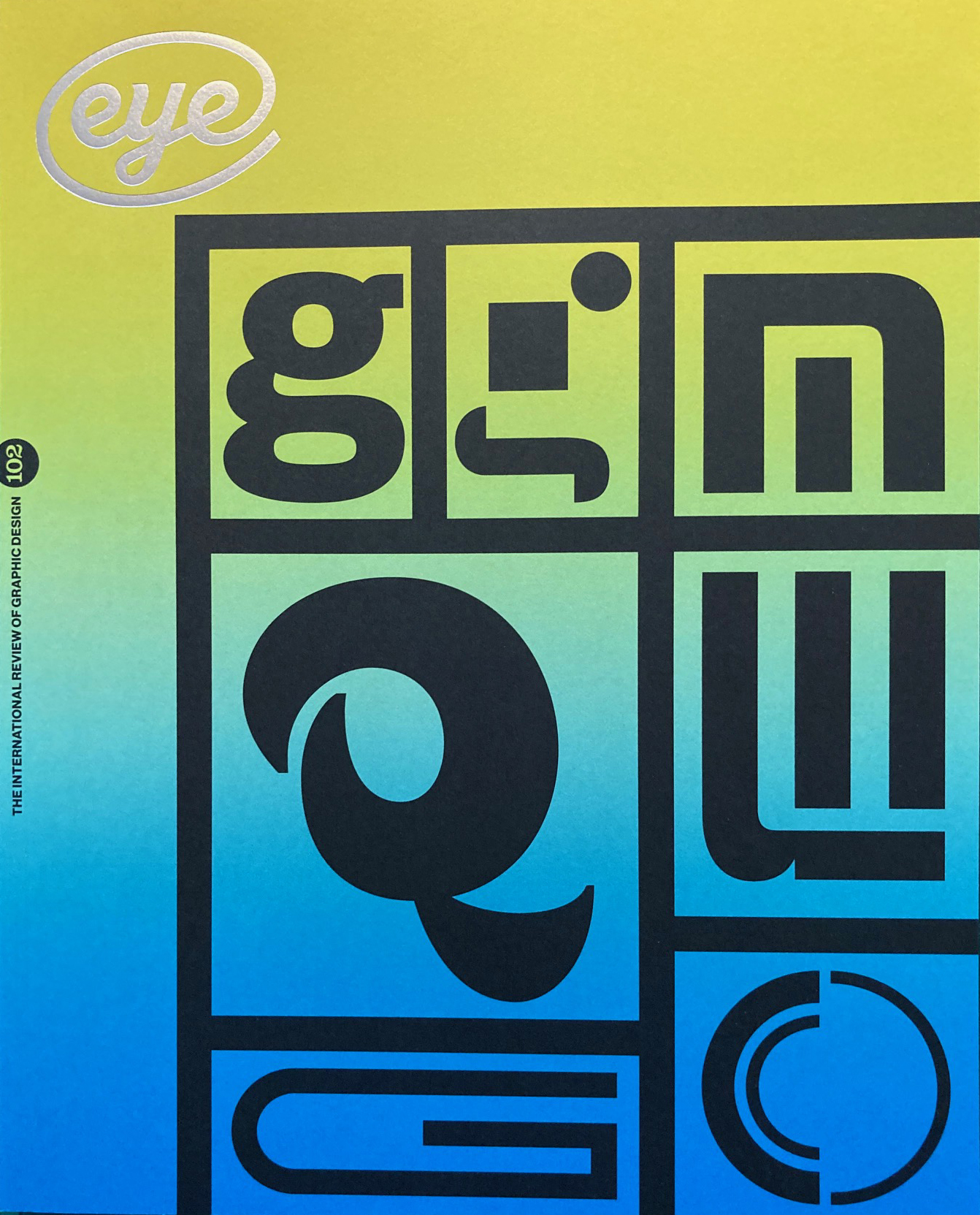Autumn 2021
Typographics 21: Session 6
18 June 2021. YuJune Park, Caspar Lam, hosts.
Adonian Chan, Trilingua
‘Hong Kong Beiwei Zansyu Type Design & Research’Sulki Choi and Sung-Min Choi, Sulki & Min
‘Korean-Latin Type Combination: A Conceptual Approach’Ryoko Nishizuka, Adobe
‘Typeface Design for East Asia’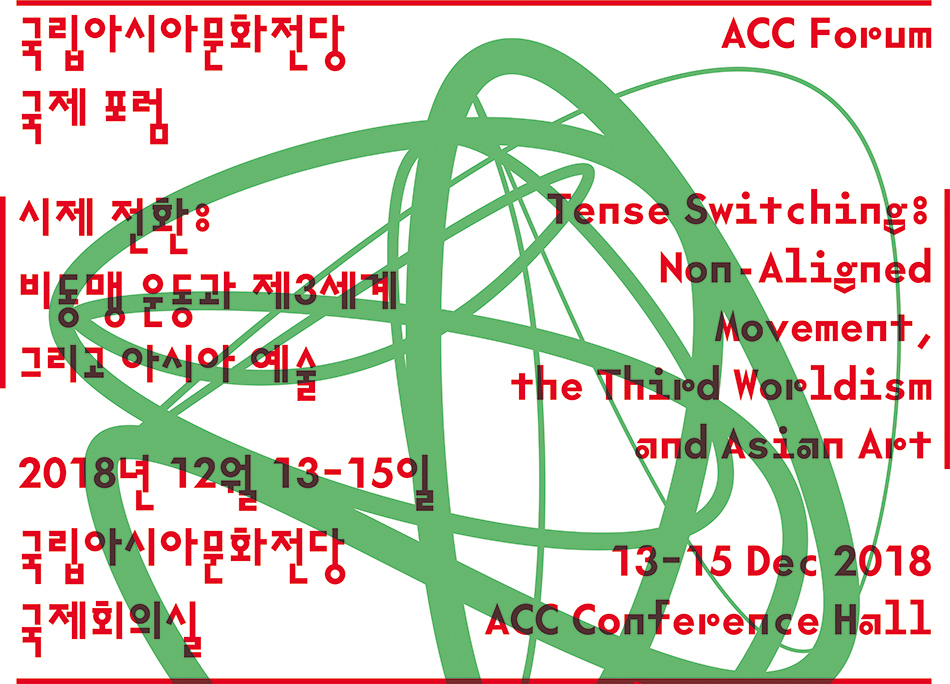
YuJune Park and Caspar Lam hosted a session dedicated to East Asian languages and scripts, during which their selected speakers from Hong Kong, South Korea and Japan addressed issues of preservation, coordination and technological implementation of CJK (Chinese, Japanese, Korean) typography and type. As the hosts put it, this line-up represented unique perspectives in what it means to design and utilise type ‘that is simultaneously rooted in a specific cultural context, yet lives in a global context’.
Adonian Chan presented examples of Hong Kong shop signs using the ‘bold, dramatic and rhythmic’ calligraphic style Beiwei, in use from the 1940s to the 80s.
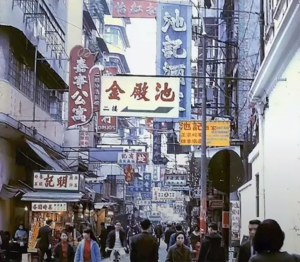
Adonian Chan kicked off the session by introducing Beiwei, a Chinese calligraphic style unique to Hong Kong shopfront signs, not found in China or Taiwan, that has been disappearing from the cityscape in recent years. In a well illustrated presentation Chan described the origins of Beiwei, initially inscribed in stone for more than 1200 years before it was first interpreted from brush strokes by nineteenth-century calligrapher Zhao Zhiqian. The shapes are believed to have found their way into Hong Kong through Au Kin Kung, an influential calligrapher who fled there for political reasons in the 1940s and who established the bold and dynamic appearance Beiwei became known for. The availability of new display technologies and digital typefaces led to the near extinction of these distinct shop sign letterings in recent years – a process Chan seeks to proactively counter by working on his own digital preservation of Beiwei, called Zansyu. Chan honoured the digital tools he uses to re-interpret ancient shapes, while carefully translating the pressure of the brush and considering a ‘diverse variable’ with the introduction of an anatomy of alternative strokes and resulting counter forms with impeccable craft. He aims to support the development of more than 10,000 glyphs via a crowdfunding campaign.
‘Tense Switching: Non-Aligned Movement, the Third Worldism and Asian Art’, 2018. Poster for NAM conference designed by Sulki and Sung-Min Choi, A1 offset litho. Typefaces: Ahnsangsoo and The Future Mono. Client: Asia Culture Center, Gwangju. Top. Close-up of the poster.
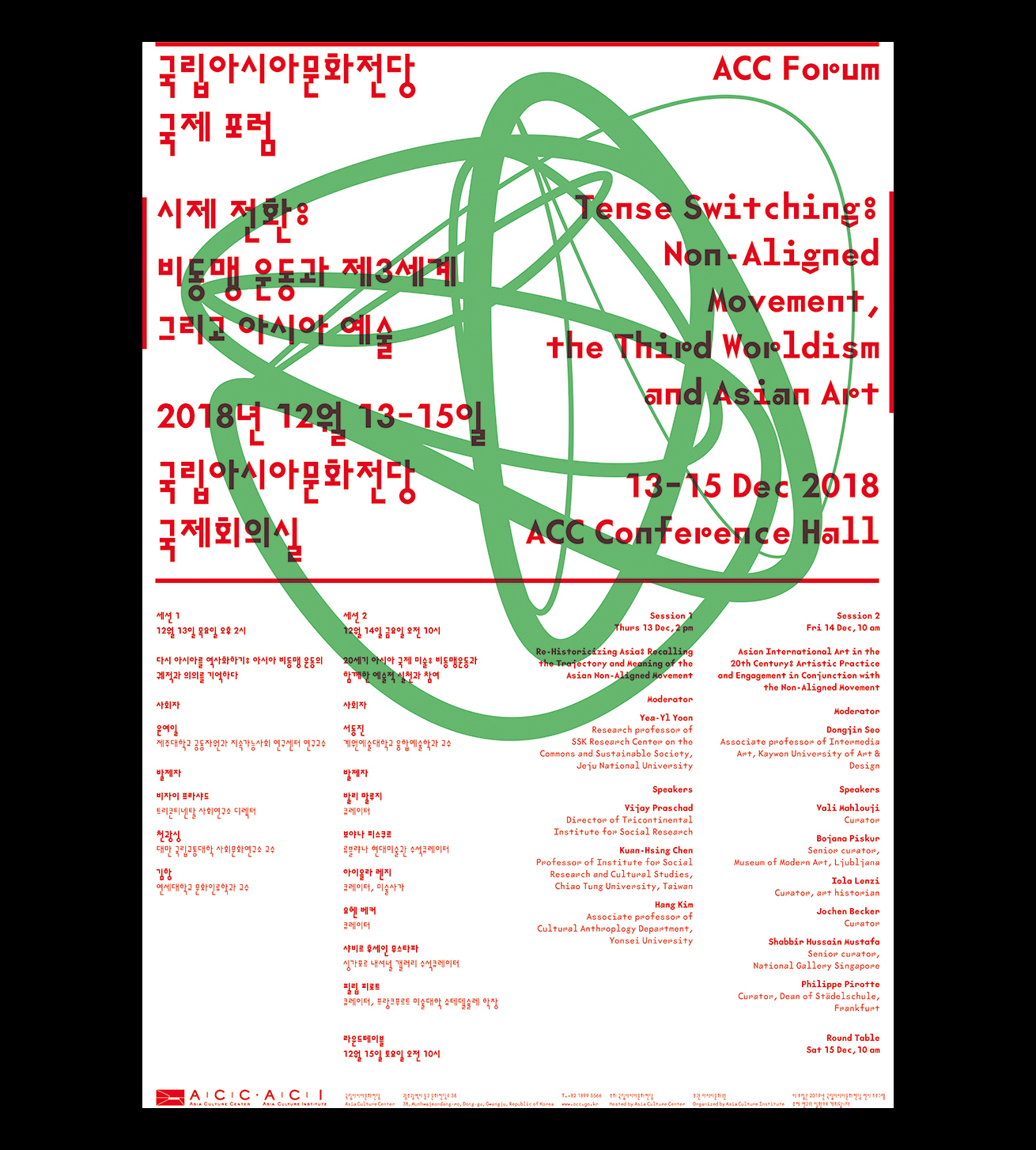
True to the central theme of Park and Lam, the relevance of embedding cultural heritage in a global context was also demonstrated in the presentation of Sulki and Sung-Min Choi, who discussed the combination of Hangul (the Korean alphabet) and Latin script. Latin letterforms are common in Korean text, but not all Hangul typefaces carry the glyphs for them. While typeface combinations are often based on visual resemblance, Sulki and Sung-Min Choi prefer to match type based on a conceptual approach. A striking example during the talk was offered in Ahnsangsoo, an unconventional ‘non-square’ Hangul typeface that had people rolling their eyes in the 1980s, because it did not follow the square-like structure of Hangul characters (syllables consisting of at least one consonant and one vowel arranged vertically or horizontally in a square space) and instead allowed some components to drop below the baseline. In their example, a poster for a NAM (Non-Aligned Movement) forum in Gwangju, it is mixed with The Future Mono, a monospaced reinterpretation of Futura equipped with some original character alternates that no foundry dared to cast in the 1920s. Both types do have a certain visual geometric resemblance, but, more importantly, they share a radical attitude.
The design of the Source Han Sans type family (2014) was headed by Ryoko Nishizuka, principal designer of Japanese typography at Adobe.
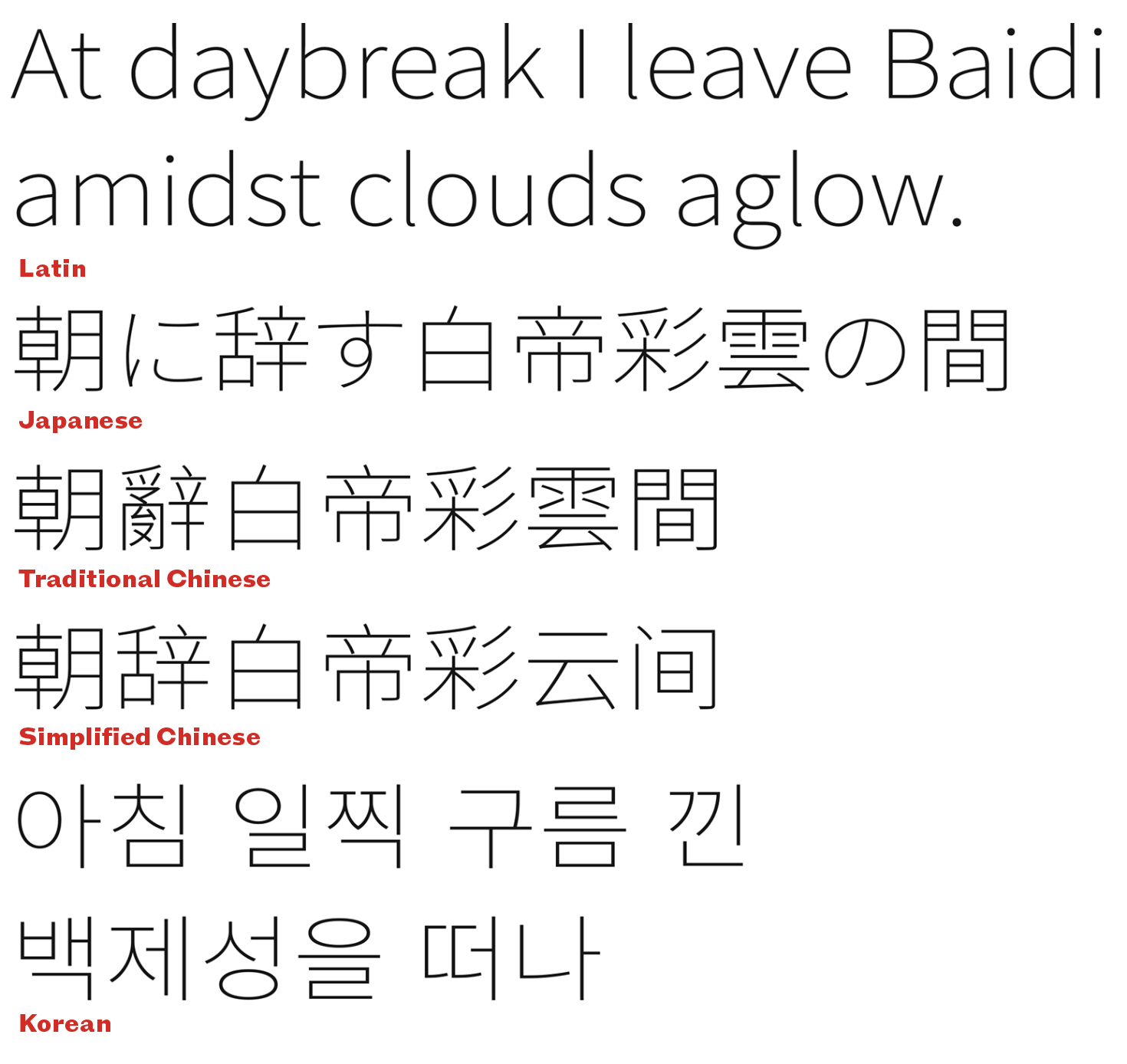
The free typeface comes in seven weights and supports traditional Chinese, simplified Chinese, Japanese, Korean and Latin.
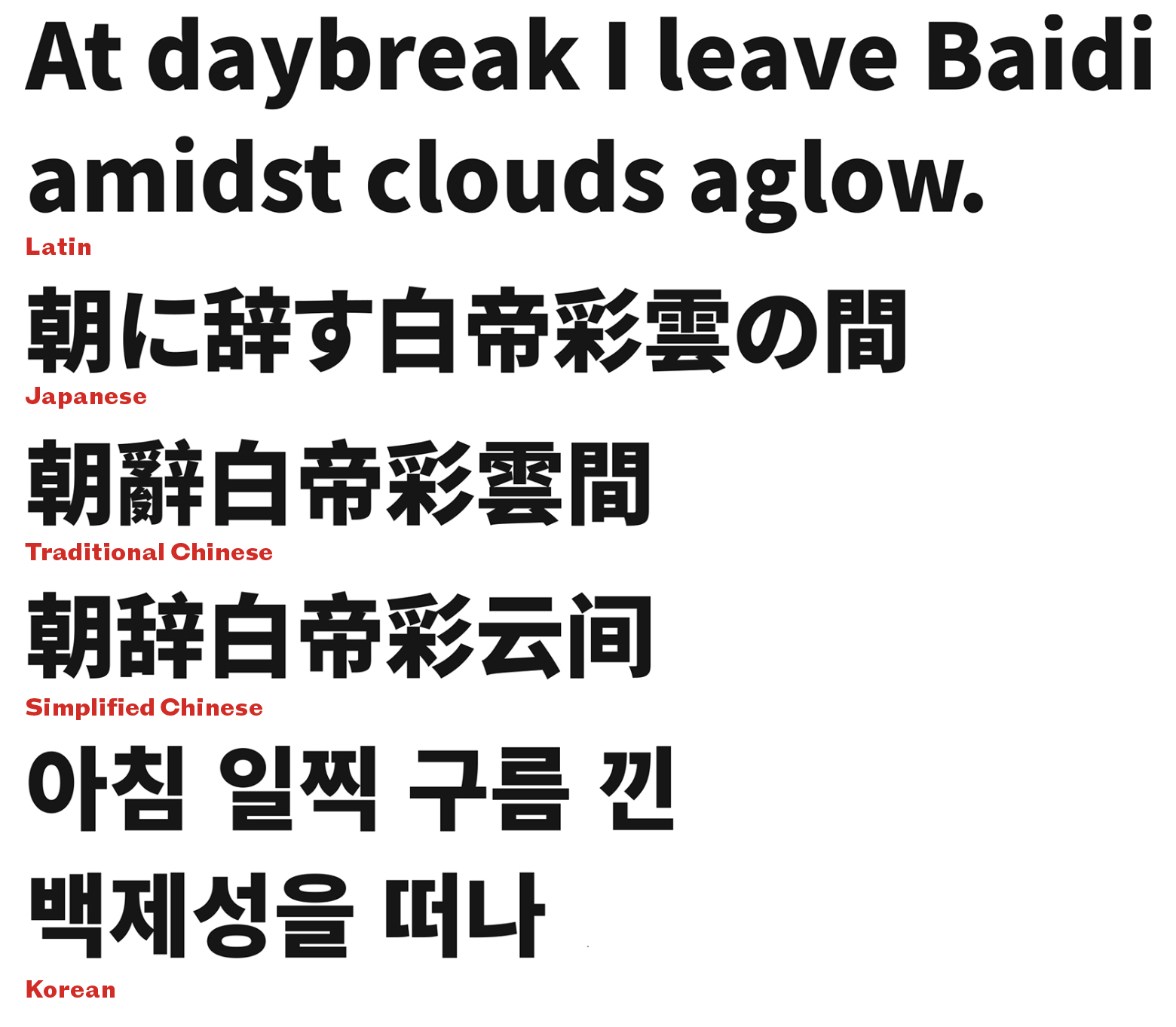
The depth of the two presentations was complemented by Ryoko Nishizuka’s final talk of the session: it underlined technology as a significant catalyst in utilising research and conceptual design approaches, the more so in a cross-cultural multi-script context in which tools and workflows can be developed, used and shared despite borders and distances.
Ferdinand P. Ulrich, typographer, type historian, lecturer, Berlin, Germany
First published in Eye no. 102 vol. 26, 2021
Eye is the world’s most beautiful and collectable graphic design journal, published for professional designers, students and anyone interested in critical, informed writing about graphic design and visual culture. It is available from all good design bookshops and online at the Eye shop, where you can buy subscriptions and single issues.

